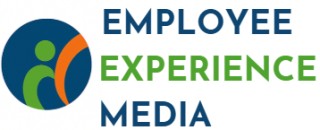Understanding Employee Assessment
Exploring the Basics of Employee Assessments
Understanding employee assessments is essential for organizations to boost talent management and create a conducive work environment. At its core, an employee assessment is a systematic process used to evaluate the performance, skills, and development needs of employees within a company. This practice not only identifies areas for improvement but also highlights strengths and potential that can be leveraged for growth.
In the modern workplace, assessments play a pivotal role in performance management. They help managers and HR professionals make informed decisions about promotions, training, and appropriate roles for team members. By examining an employee's performance, it becomes easier to align their skills with organizational goals.
With the rise of technology, assessment tools have become more sophisticated, providing a comprehensive view of employee performance. These tools range from software designed for performance reviews to techniques such as 360-degree feedback. Such tools are instrumental in creating a feedback-rich culture that emphasizes continuous development and improvement.
Employee assessments are more than just performance reviews. They are a tool for fostering engagement and satisfaction by providing clear development paths for each team member. When executed effectively, they pave the way for employee growth and organizational success. For more insights on enhancing workplace satisfaction through consulting, visit
this resource.
The Role of Feedback in Assessments
The Importance of Constructive Feedback
Feedback is a cornerstone of effective employee assessments. It serves as a bridge between management and employees, facilitating open communication and fostering a culture of continuous improvement. Constructive feedback helps employees understand their strengths and weaknesses, enabling them to focus on areas of improvement and align their goals with the organization's objectives.
Feedback as a Tool for Growth
When integrated effectively into the assessment process, feedback can significantly enhance employee performance and development. It provides employees with insights into their performance, helping them identify areas where they excel and areas that require further development. This process not only aids in personal growth but also contributes to the overall success of the team.
Feedback Mechanisms and Techniques
Organizations can employ various feedback mechanisms to ensure that assessments are comprehensive and effective. Techniques such as 360-degree feedback and regular performance reviews are essential in providing a holistic view of an employee's performance. These tools help in identifying key features of employee engagement and development, ensuring that feedback is not only constructive but also actionable.
Feedback and Employee Engagement
Effective feedback is crucial for maintaining high levels of employee engagement. When employees feel heard and valued, their motivation and commitment to the organization increase. Feedback helps in creating development plans that are tailored to individual needs, promoting a culture of talent management and continuous improvement.
For a deeper understanding of how feedback and assessments can be aligned with legal requirements, you might want to explore understanding North Carolina's overtime regulations as an example of aligning organizational practices with compliance standards.
Challenges in Employee Assessment
Overcoming Common Barriers in Employee Assessment
Employee assessments are invaluable for understanding employee performance, identifying areas for improvement, and fostering growth. However, the process doesn't come without its set of challenges. Recognizing and addressing these barriers is crucial for developing an effective employee engagement strategy.
One of the primary challenges is ensuring fair and accurate evaluations. Bias, whether conscious or unconscious, can heavily influence assessments. This can lead to misjudging an employee's skills, strengths, and weaknesses. Using reliable assessment tools and providing management with adequate training can help minimize bias, enhancing the credibility of the assessments.
Communication is another hurdle in the assessment process. Effective employee performance reviews require clear, constructive feedback, yet managers may struggle with delivering it tactfully. This miscommunication can demotivate employees rather than foster growth. Encouraging open dialogue and integrating feedback systems into the performance management process are essential steps to overcome this challenge.
Performance management systems and assessment tools often lack the adaptability to meet diverse employee needs. A one-size-fits-all approach can overlook individual strengths areas and hinder effective development plans. To counter this, organizations should focus on personalized assessment approaches that consider each employee's unique contributions and career goals.
Technological limitations also pose significant challenges. Without robust software solutions, collecting, analyzing, and storing assessment data can be cumbersome. Investing in up-to-date performance management systems ensures smoother operations and more insightful data analysis.
Finally, there's the challenge of following up on assessments. Identifying areas for improvement is just the beginning; effective employee growth requires actionable development plans. Consistent reviews, tailored training, and continuous feedback loops are necessary to support employees' professional journeys.
Addressing these challenges not only enhances the overall assessment process but also has a significant positive impact on workplace experience. To learn more about how embracing these improvements can create a more engaging environment, consider celebrating your first year at work with humor as a positive break from traditional corporate routines.
Impact on Employee Experience
Enhancing Workplace Experience through Effective Performance Reviews
The impact of employee assessments on overall employee experience cannot be overstated. When assessments are conducted effectively, they serve as a powerful tool to both recognize strengths and identify areas for improvement, fostering a supportive environment for growth. Effective assessment processes are integral to performance management, providing valuable feedback that empowers employees to improve performance and develop skills.
Performance reviews, when smooth and constructive, contribute to employee engagement. When employees understand their progress and contributions, they are more likely to feel aligned with the company’s goals. This alignment not only helps in achieving personal milestones but also aids in talent management, ensuring that everyone is working towards common objectives.
One of the key features of successful employee assessments is their capability to reveal areas for development. This information is crucial for tailoring development plans that are in line with the strengths and weaknesses of each team member, enhancing both individual and organizational growth. Employee assessments help create a pathway for training and development, encouraging continuous learning and improvement.
Additionally, effective employee assessment tools and techniques can significantly influence employee morale and motivation. By recognizing achievements and providing constructive feedback, assessments ensure that employees feel valued and supported. This positive reinforcement, in turn, enhances the workplace experience, making employees eager and motivated to excel in their roles.
Overall, the process of assessing performance can either be a catalyst for improvement or a hindrance if not executed properly. With a keen focus on employee development and a commitment to using assessment tools effectively, organizations can turn assessments into a cornerstone of a thriving employee experience, promoting long-term success for both employees and the company.
Effective Approaches and Instruments in Employee Assessments
In the evolving landscape of employee assessments, leveraging the right tools and techniques can significantly enhance both performance management and employee development. Utilizing robust assessment tools allows organizations to identify areas for improvement and growth while nurturing talent and promoting employee engagement.
One of the key features of successful employee performance assessments is the incorporation of diverse feedback mechanisms. For instance, implementing a 360-degree feedback approach offers comprehensive insights into an employee's strengths and weaknesses. This multi-source feedback process encourages a holistic view of performance, fostering a culture of open communication and continuous improvement.
Digital assessment software also plays a crucial role in streamlining the assessment process. Such tools help in efficiently tracking employee progress, documenting performance reviews, and aligning individual goals with organizational objectives. These platforms not only facilitate seamless data collection and analysis but also offer customized development plans tailored to each employee's needs.
Moreover, focusing on skills development through regular training programs is essential to any assessment strategy. Training initiatives should be designed to address identified areas of improvement, empowering employees to acquire new skills and enhance their performance. By working closely with team members, management can help employees overcome challenges and reach their full potential, ultimately contributing to overall organizational success.
Finally, integrating assessment processes within a comprehensive talent management system ensures that performance assessments help in strategic decision-making. By continuously evaluating and adapting these processes, organizations can achieve greater employee alignment, engagement, and satisfaction, leading to a more positive work environment and improved employee experience.
Future Trends in Employee Assessment
Emerging Trends in Employee Performance Assessments
The landscape of employee assessments is constantly evolving, with advancements in technology and changes in workplace dynamics reshaping how performance reviews are conducted. Remaining agile and open to new trends is key to ensuring an effective assessment process.
One emerging trend is the incorporation of artificial intelligence and machine learning in the assessment process. These technologies can analyze large sets of performance data to identify areas of improvement and forecast potential growth paths for employees. AI-driven assessment tools help management teams tailor development plans that focus on both strengths areas and areas improvement, promoting employee growth in a personalized manner.
Another trend gaining traction is the shift toward continuous feedback, replacing annual performance reviews with more frequent, real-time feedback sessions. This approach encourages an ongoing dialogue between employees and managers, fostering an environment of ongoing employee development and engagement. By frequently discussing goals and progress, employees are more aligned with company objectives and can swiftly adjust their approach where necessary.
Additionally, there’s an increased focus on holistic employee development beyond technical skills. Modern performance assessments are looking at employees' soft skills such as communication, adaptability, and problem-solving abilities, which are crucial for effective team collaboration and talent management.
Integrated assessment management systems that consolidate training and feedback into a single platform are also becoming more prevalent. These systems streamline the feedback process and make tracking development plans more efficient, allowing for a seamless integration of feedback into daily tasks.
These trends underscore the need for companies to adapt their performance management strategies to maintain a motivated workforce. By leveraging emerging technologies and methodologies, organizations can better support their employee's personal and professional growth, thus enriching the employee experience.














